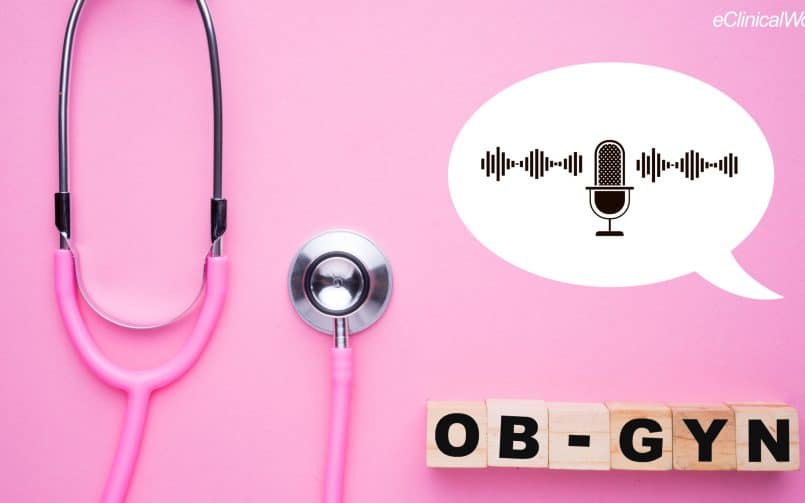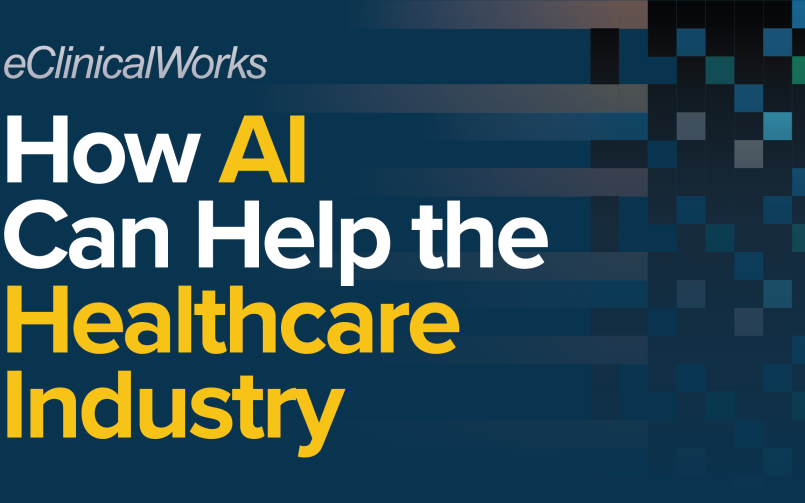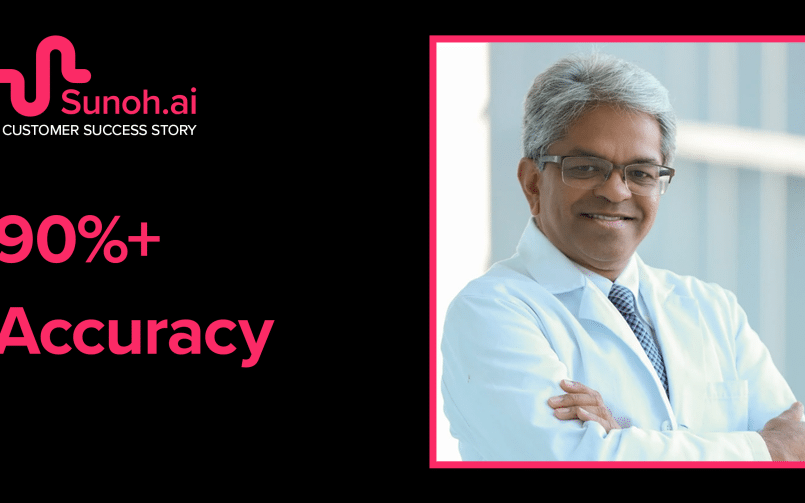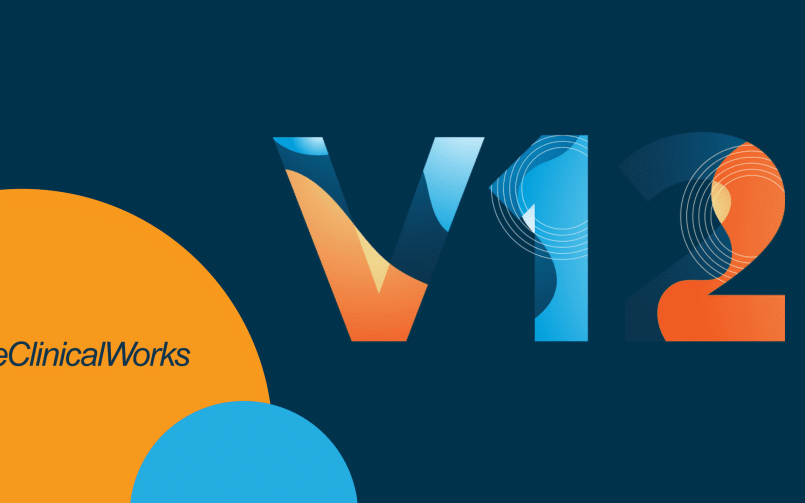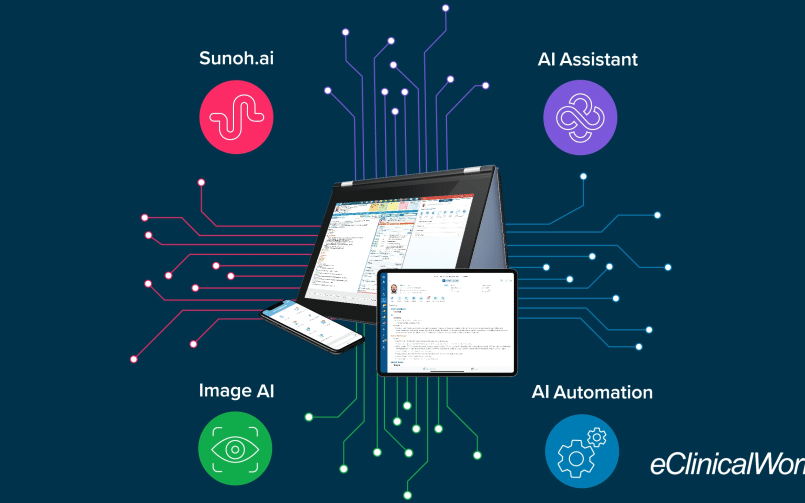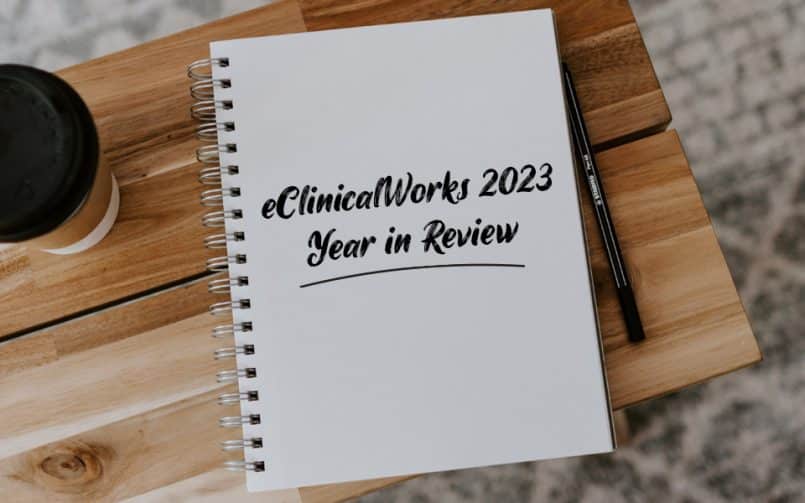Benefits of Medical AI Scribe Integrated within the EHR
- 29 January 2024
- Blog
eClinicalWorks

The future is here.
The evolution of artificial intelligence (AI) is a reality that’s transforming the patient-care industry in ways previously unimagined, enhancing the patient-care experience by leaps and bounds. AI is shifting patient care from a generalized approach to a more personalized, intuitive, and efficient one. It’s not just improving the precision of diagnostics and treatment plans. It’s revolutionizing how healthcare providers engage and communicate with their patients.
Last year, eClinicalWorks® (eCW) introduced a series of AI-powered functionalities, improving provider satisfaction, enhancing efficiency, and reducing costs. The standout functionality was integrating with Sunoh.ai, the revolutionary medical AI scribe. It’s designed to interact with people more intuitively and naturally, allowing computers to understand spoken language, recognize different voices, comprehend complex commands, and even respond in a human-like manner.
Sunoh turns patient-provider conversations into clinical documentation by listening, generating a dialogue flow, creating a visit note, and suggesting actions for the provider to review and approve, such as an order or prescription the provider referenced in the conversation.
In this blog, we will delve into the benefits of medical AI scribes or Speech AI integrated within the EHR system:
Streamlining Documentation
Many providers employ human medical scribes to ease the burden of documentation, but finding and retaining qualified scribes and patient acceptance are among many challenges with the human scribe approach. A medical AI scribe, like Sunoh, is the virtual assistant that can now take on this role. It uses voice recognition technology to transcribe conversations between doctors and patients and turn them into comprehensive clinical notes. Manual notetaking is no longer needed during or after patient visits.
Streamlining Workflows
Medical AI scribes can integrate into existing workflows. They can pull up a patient’s medical history, set reminders for follow-ups, and order tests or prescriptions, all via voice commands, reducing the administrative burden on healthcare providers.
Enhancing Efficiency
By transcribing patient-provider conversations into clinical documentation, a medical AI scribe saves time and ensures that the information is accurate and comprehensive. It automatically imports the transcribed data into the appropriate fields in the EHR and categorizes information in a structured manner (symptoms, diagnoses, treatment plans), improving the accuracy and consistency of medical records.
Texas Family Wellness Clinic Inc.
According to Amie Guevara, Office Administrator for Texas Family Wellness Clinic Inc., the burden of clinical documentation often hinders the patient-provider relationship. She points out that traditional scribe training takes months, which is challenging due to frequent employee turnover. Sunoh.ai seems to be the perfect solution to these issues, automating documentation during patient encounters while allowing providers to edit as necessary. This means providers can focus more on their patients. Amie believes that Sunoh.ai will not only benefit patients and providers but also enhance the clinic’s overall efficiency.
Enhancing Patient Engagement
By automating and streamlining the documentation process, healthcare providers can give their undivided attention to their patients during consultations, leading to more meaningful interactions, better care, and stronger patient-provider relationships.
Improving Decision Making
Speech AI evaluates patient-provider conversations and documents and organizes key details. It eases the cognitive burden on the provider so they can focus on making well-informed medical decisions instead of composing a chart note.
Reducing the Task Switching Burden
Providers can use voice commands with a voice-enabled EHR for multiple tasks, like taking notes, pulling patient histories, ordering tests, and more. This allows them to focus on patients without manually hopping around in the EHR. During patient consultations, they can quickly access relevant information like medical histories, lab results, or medication lists via the AI scribe. AI Scribes can set reminders for follow-up appointments, medication refills, or lab tests while providers are engaged in consultations. This saves time and ensures no important tasks are overlooked.
Women’s Health Associates
Scott Tucker, the Practice Administrator at Women’s Health Associates, acknowledges the benefits of in-person and remote scribes. However, their high turnover due to further educational pursuits disrupts workflow. He believes that Sunoh is an opportunity to mitigate risk and liability, enhance the patient-provider relationship, and streamline the practice’s documentation process.
Reducing Burnout
Speech AI minimizes stress and potential burnout among medical staff by automating administrative tasks such as data entry and retrieval. Automatic notetaking and transcription allow providers to focus more on patients than paperwork. This leads to improved care for patients and increased job satisfaction for providers. AI scribes can lower the incidence of documentation errors and omissions, leading to less rework. And they can reduce overtime and after-hours work, contributing to a healthier work-life balance for physicians.
The rise in demand for medical AI scribe technology indicates that practices crave its ability to streamline workflows, automate notetaking, and provide real-time assistance. Many eCW customers have signed up for Sunoh.ai as it’s fully integrated into the EHR. It’s highly valued due to the multitude of benefits it offers.
The steady uptick underscores the growing understanding that incorporating AI-powered scribe technology can lead to significant improvements in both physician well-being and patient outcomes.







